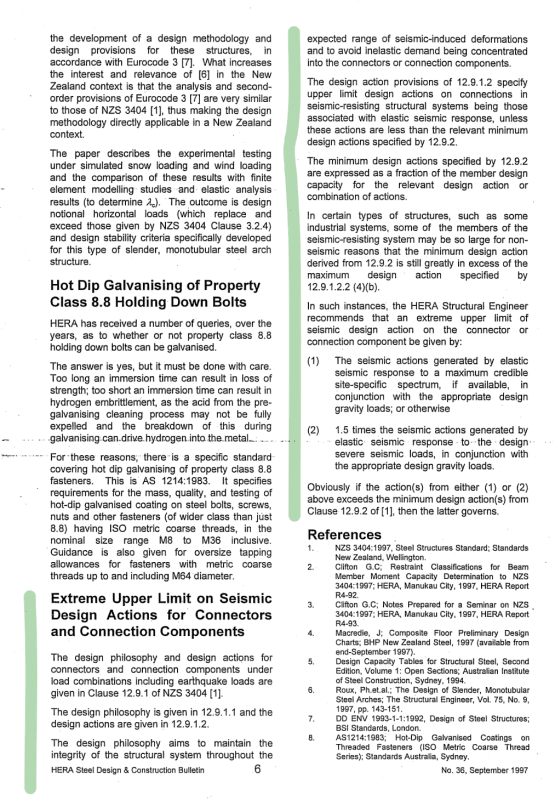Hi, from my code NZS3404 for steel design, there is the requirement for minimum design actions acting on steel connections: "Connections at the end of tension or compression members - a force of 0.3 times the member design capacity". I'm looking at designing some epoxy bolts for small columns which primarily take gravity loads, but under uplift may experience tension. So this requirement to design the columns for 30% member tension capacity will kill my design.
Eg, I have 125SHS column sized for gravity loads and EQ lateral deflections, epoxy bolted to concrete. Under uplift it takes 20kN tension; under 30% member tensile capacity I need to size it for 400kN tension. How the f**k do I design my epoxy bolts for 400kN tension?? xD I must be missing something here.
Eg, I have 125SHS column sized for gravity loads and EQ lateral deflections, epoxy bolted to concrete. Under uplift it takes 20kN tension; under 30% member tensile capacity I need to size it for 400kN tension. How the f**k do I design my epoxy bolts for 400kN tension?? xD I must be missing something here.



![[pharaoh] [pharaoh] [pharaoh]](/data/assets/smilies/pharaoh.gif) This discussion is almost like a theological discussion about the meaning of the holy texts. While we know they were written by imperfect code writers based on the teachings of the Gods of Engineering, it still can be a source of existential angst in working out what it all really means and whether my understanding of it has been wrong all this time. Oh and thrown into the mix are two branches of only slightly divergent sects of the same religion who have slightly different texts to refer too. Those in lands far away who follow completely different codes must be looking on at this discussion with bemusement. (And of course content in knowing that their Code is the one true Code.
This discussion is almost like a theological discussion about the meaning of the holy texts. While we know they were written by imperfect code writers based on the teachings of the Gods of Engineering, it still can be a source of existential angst in working out what it all really means and whether my understanding of it has been wrong all this time. Oh and thrown into the mix are two branches of only slightly divergent sects of the same religion who have slightly different texts to refer too. Those in lands far away who follow completely different codes must be looking on at this discussion with bemusement. (And of course content in knowing that their Code is the one true Code. ![[lol] [lol] [lol]](/data/assets/smilies/lol.gif) )
)